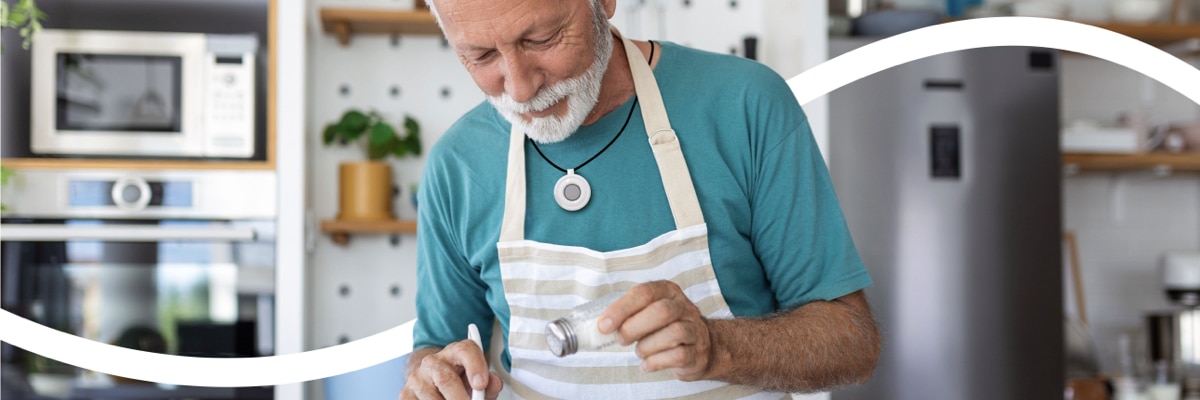As the leading cause of fatal and nonfatal injuries for older adults, falls not only threaten a person’s independence, but they also have a significant impact on whether someone can live safely at home. If not identified early, falls can result in a decline in health, severe injury, hospitalization, or even complete dependence upon caregivers and assistance for daily activities.
Falls carry an enormous burden on the U.S. healthcare system. Nearly $50 billion a year is spent on fall-related costs. But the truth is falls are not an inevitable consequence of aging. Research has shown that prompt intervention and fall prevention strategies can help reverse declining activity and lower the risk of falls.
Why the Connect America’s Fall Prevention Program is Unique
While numerous fall prevention programs provide tips and offer strategies to help reduce the risk of falls. Until now, no other program has ever leveraged connective health technology with predictive analytics to enable a more proactive approach to prevention. Through a combination of innovative connective health devices, AI virtual assistance, predictive risk analytics, and clinical support services Connect America’s Fall Prevention Program is taking aim at this insurmountable problem.
Rooted in evidence-based data, the program provides partnering healthcare organizations with unparalleled visibility into an individual’s mobility and signs of frailty, including shifts in health, activity, and engagement. This is essential because declines in activity are a significant predictor of falls. With this critical intelligence, care teams can more quickly identify at-risk individuals and target personalized interventions to significantly reduce falls. If fact, research has shown that interventions can significantly reverse declining activity and prevent fall injuries by up to 37%.
Critical Insights That Drive Smarter Care Interventions
To do this, the program leverages technology such as the CareSage Analytics Platform, and an AI virtual health assistant, to deliver a fall risk assessment and gather insights into a participant’s living environment, health, and fall-related risk factors.
Based on the survey responses, a risk score is created. This score categorizes participants into varying risk levels. Then, care teams can view dashboards that display risk scores, incidents, top call reasons, and transport risk.
Unlike other fall prevention programs, this is not a “one-size-fits-all.” Connect America’s fall prevention program enables healthcare organizations to create a solution that best addresses their unique needs, including customized protocols and call routing that can be implemented to meet strategic requirements.
A Comprehensive End-to-End Fall Prevention Program
The industry-first fall prevention program includes:
- An evidence-based falls risk assessment
- CareSage™ Analytics Platform with population-based and outcomes reporting
- Risk scoring for identification and stratification of population health
- Connective health devices for remote monitoring
- Esper, the AI-virtual assistant for enhanced engagement, communicating surveys and educational content
- Customized protocols and call routing
- 24/7 concierge and clinical support
Ongoing Engagement and Education for Fall Prevention:
Participants in the Connect America Fall Prevention Program have access to an AI-virtual health assistant, 24/7 concierge call center, emergency and non-emergency assistance, and support services such as access to transportation, medication and meal delivery.
The AI virtual health assistant delivers ongoing engagement including check-ins, health assessments, surveys, and educational information throughout the course of the program. Participants are provided with fall prevention material aimed at improving mobility to minimize the likelihood of falls and ensure best practices for prevention.
Why it Matters to Healthcare Organizations?
For healthcare payers, the value of a comprehensive falls program like this can not only help them improve STAR ratings and meet HEDIS requirements set forth by the National Committee for Quality Assurance (NCQA), but it can also lower unnecessary care utilization, improve member satisfaction and keep individuals safer in their homes. For hospitals and value-based care organizations, the program can help improve quality measures and reduce the likelihood of costly readmissions and ED visits related to falls.
Only with Connect America’s Fall Prevention Program are healthcare organizations empowered with the critical intelligence and tools to identify high-risk individuals, predict potential transfers, and target interventions to prevent falls before they happen. By using a comprehensive, integrated approach to fall prevention, the program helps keep aging and vulnerable populations out of the hospital and living safely and independently in their homes.

